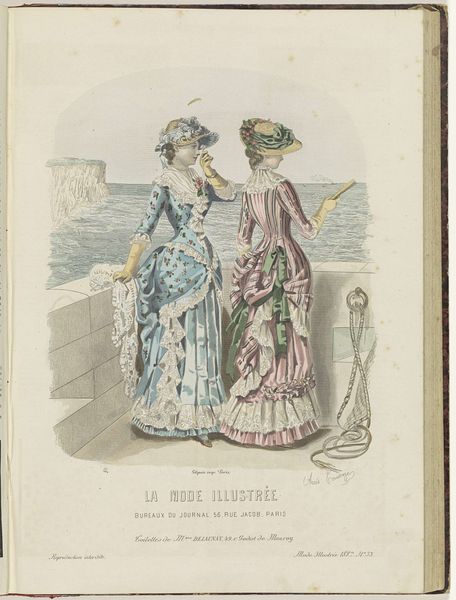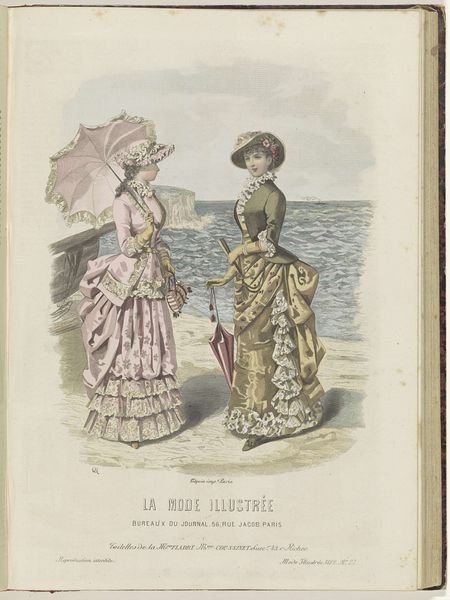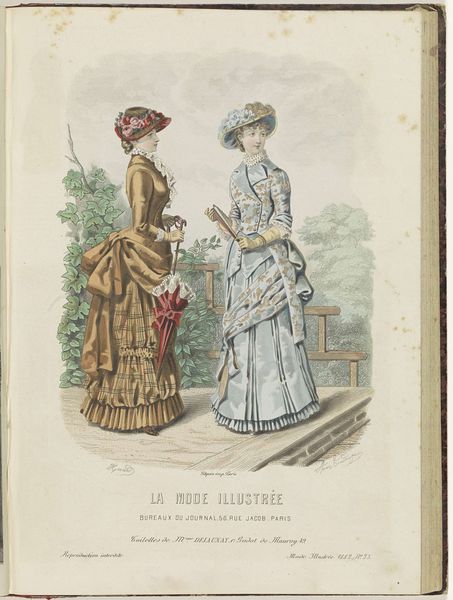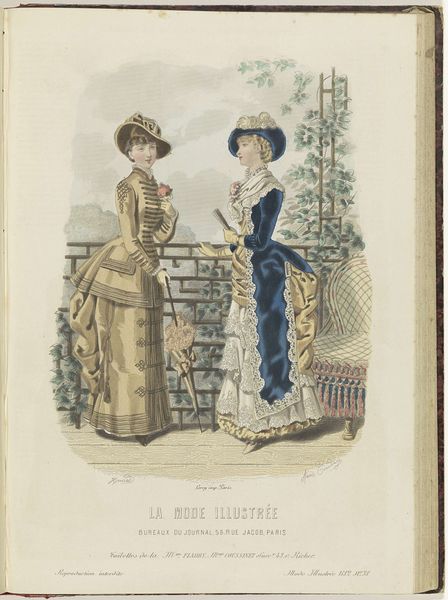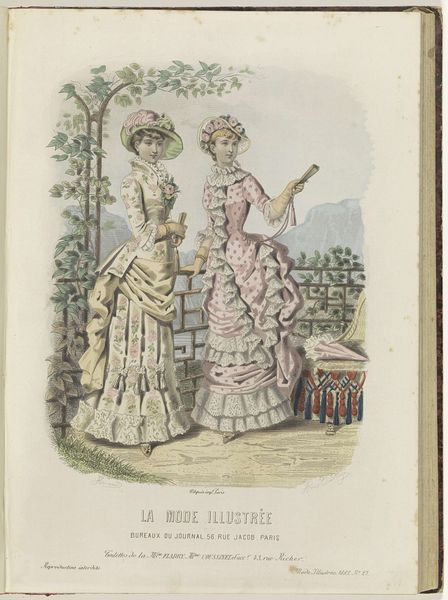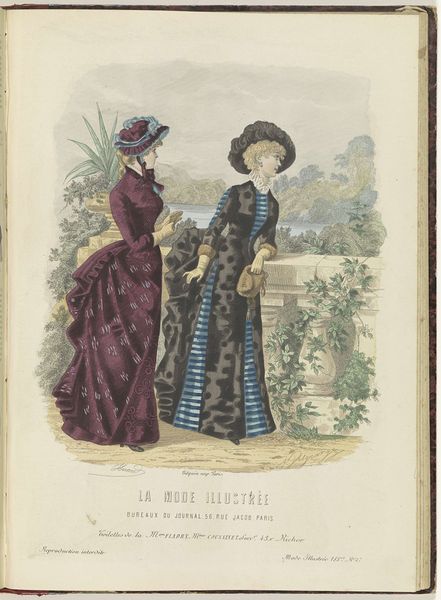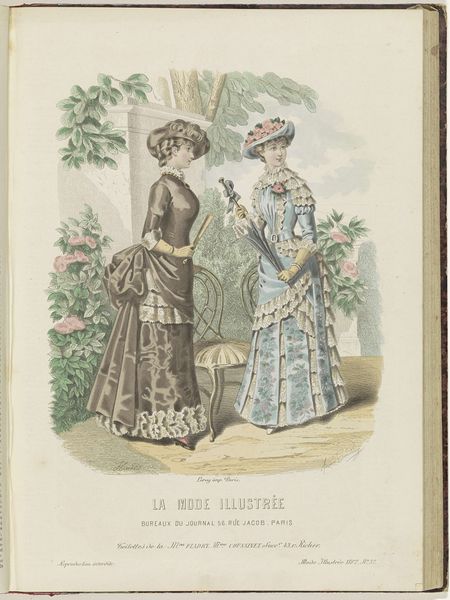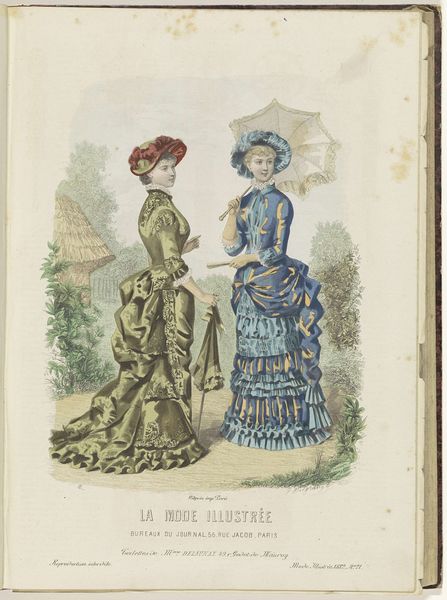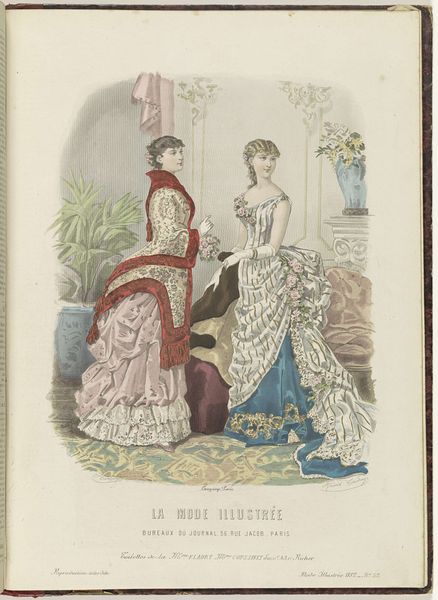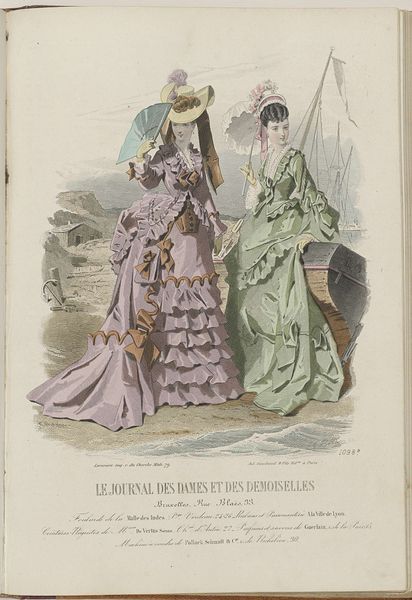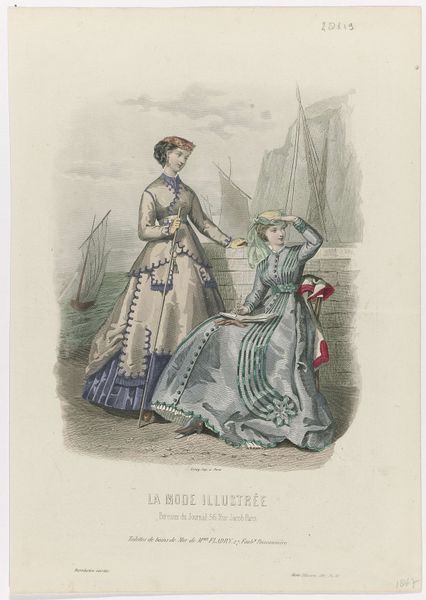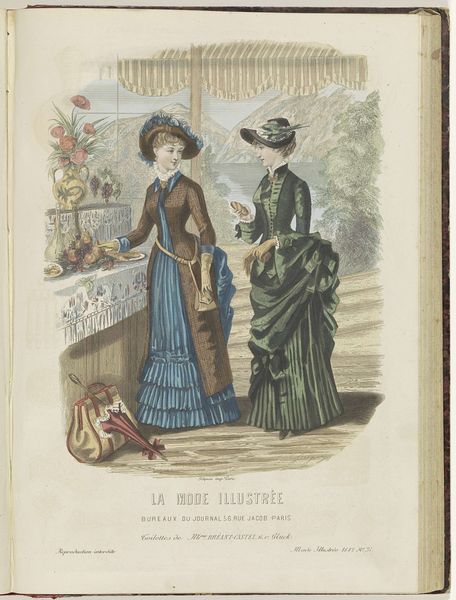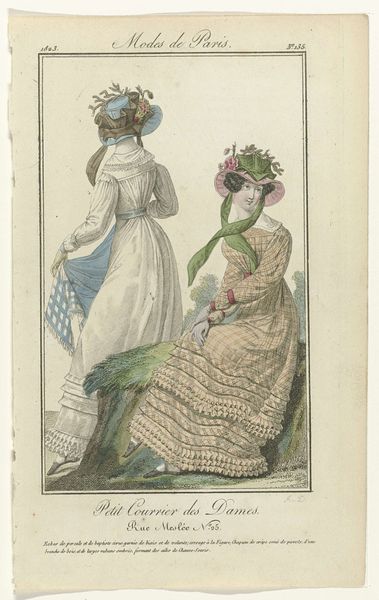
Dimensions: height mm, width mm, thickness mm
Copyright: Rijks Museum: Open Domain
Curator: Let’s turn our attention to "La Mode Illustrée, Journal de la Famille, 1882," an engraving by Firmin-Didot & Cie, housed here at the Rijksmuseum. Editor: My first impression is how impeccably staged the figures are. It feels like a scene lifted straight from a genteel novel, a tranquil moment before a dramatic plot twist, maybe? Curator: The publication it comes from, La Mode Illustrée, was very influential in its day, shaping notions of bourgeois femininity. We see the influence of Romanticism, though within very academic parameters, as the women here represent ideal types of the period. Editor: Yes, you see these beautiful dresses on these impossibly corseted women framed against that idyllic seascape; there's something about this that seems so manufactured. It reminds me of how much pressure women faced to conform to very strict societal roles at the time. It all seems very distant from reality. Curator: Indeed. The very existence of such journals served a purpose—to both reflect and create desire. But there’s also artistry at play. Notice how the details of their gowns, rendered via engraving, would have been incredibly valuable for seamstresses who could replicate the looks for clients. Editor: True, but it's interesting how a seemingly innocent image actually conveys so much about power structures, isn't it? From our contemporary perspective, we can dissect this representation of beauty, understanding it as part of a larger narrative. These images normalize very particular beauty ideals that leave so many others excluded from conversations about beauty, desirability, and visibility. Curator: And within these depictions, class anxieties and aspirations play out as well, something particularly apparent to the readers of the time. Editor: So, the next time you find yourself admiring a historic piece of fashion, consider not just its aesthetic appeal, but the story it tells about its time and, perhaps even more importantly, about ours. Curator: Absolutely, art gives us this capacity to examine and analyze the way these publications shaped taste and even lives of the people.
Comments
No comments
Be the first to comment and join the conversation on the ultimate creative platform.
